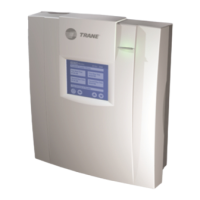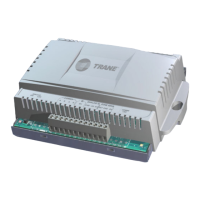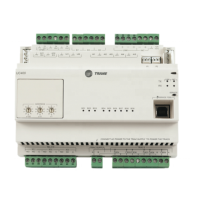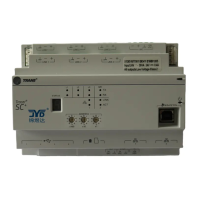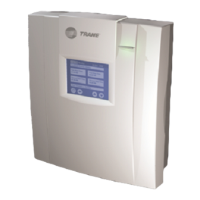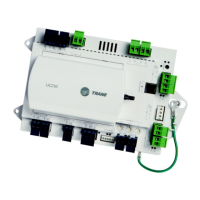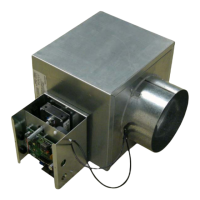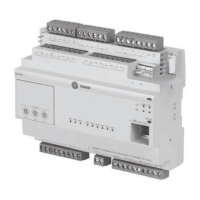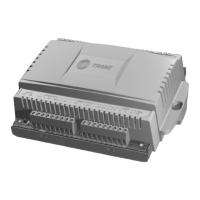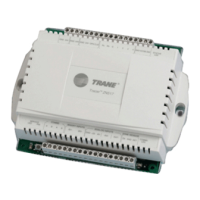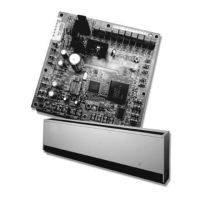Chapter 8 Using the Occupancy and PID blocks
100 CNT-SVP01C-EN
Incorporating the PID block
Add the necessary intermediate blocks and then make the PID block con-
nections.
To incorporate the PID block:
1. Place a Fail block in the design space and connect it so that it checks
the measured variable for failure.
2. Place three blocks to serve as the proportional, integral, and deriva-
tive gains for the PID block and connect them to the block.
These three blocks could be inputs, constants, or variables.
3. Connect a block to the Output Enable/Disable port of the PID block.
When the PID block receives a true value here, it outputs its calcu-
lated result. When the PID block receives a false value here, it out-
puts its disable-position value.
4. Connect the Fail block to the Fail port of the PID block.
When the PID block receives a false value here, it outputs its calcu-
lated result. When the PID block receives a true value here, it outputs
its fail-safe-position value.
5. Connect an input block to the Measured Variable port of the PID
block.
6. Connect a block, typically a constant or variable, to the Setpoint port
of the PID block.
7. Connect a block, such as an analog output status block or a local ana-
log variable block, to the Feedback Input port of the PID block if you
cleared the Decouple PID Block Output check box in the PID Proper-
ties dialog box.
8. Connect the PID block to the block you want it to control, typically an
analog output. See Figure 71 for an example of a PID block in a pro-
gram; see Figure 72 on page 102 for an example of a PID block with
the Feedback Input port present in the program.
